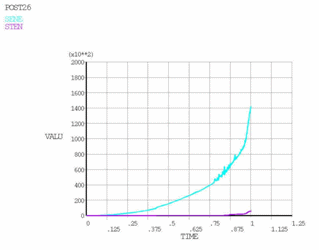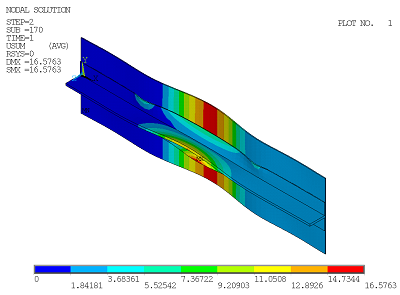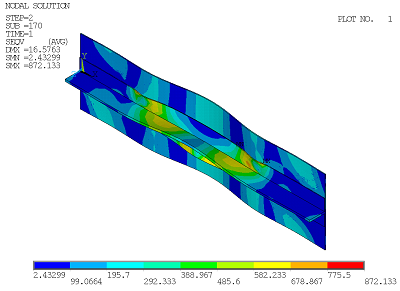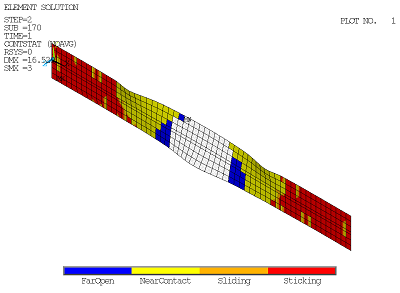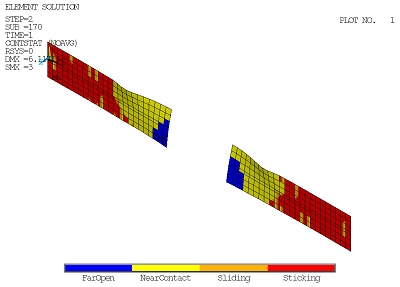A converged solution is obtained with the help of the nonlinear stabilization technique.
The energy dissipation ratio is carefully chosen to avoid excessive artificial stabilization energy. As shown in Figure 5.8: Time History Plot of Strain and Stabilization Energies, the level of stabilization energy (STEN) is low compared to the total strain energy (SENE) throughout the simulation; therefore, the validity of the simulation results can be guaranteed. The figure also shows that the solution becomes increasingly unstable toward the end of simulation. If you encounter a convergence difficulty, you can increase the energy dissipation ratio to an adequate level; however, validation of the new energy dissipation ratio is required.
The buckling of the stiffener and the separation of the skin-flange connection are clearly indicated by the final deformed shape, shown below.
This highly nonlinear deformation leads to complex overall stress distributions and a number of significant stress concentrations, as shown below.
The following two figures show the final contact status on the skin and the flange. As expected, debonding of the skin-flange interface starts at the edges of the imperfection and propagates further into the bonded areas as the load increases.
The figure above shows that the initial sticking status of the large skin-flange interface areas has changed to open or near-contact status at the final converged stage. The structure may undergo catastrophic failure and fail to withstand any further load as debonding progresses. In this case, a transient simulation would be more suitable.



